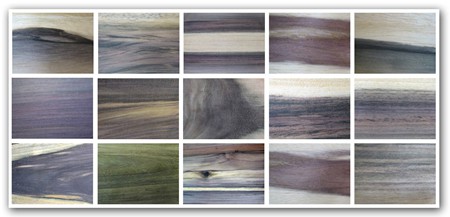Hands-On Learning: The Blue Mahoe journey
From 2003 to 2014, we embarked on our first tree harvests, focusing on Hibiscus elatus, commonly known as Blue Mahoe or Majo Azul. These trees were carefully selected from areas around the homestead and along the road to thin the canopy and remove damaged or misshapen specimens. With no prior experience, we dove into the world of sustainable forestry, guided by the principle of “learning by doing.”
Using a portable Ross Bandmill—and later, a Cook’s Portable Sawmill from 2013 onward—we milled the harvested wood, stacking and drying it for use. Over the years, we’ve honed our skills in marketing and selling this beautiful hardwood, transforming challenges into invaluable lessons.
In 2006, we partnered with U.S. Forest Service firefighters eager to host a chainsaw workshop. Together, we engaged in selective harvesting of mahoe trees, and Andrés Rúa gained hands-on training in directional felling—a skill that has become a cornerstone of this project.
Since those early days, Thrity Vakil and Andrés Rúa have continued to refine the art of felling, milling, and marketing Blue Mahoe (Hibiscus elatus), often working side by side with volunteers from around the world. This global collaboration has not only deepened our commitment to sustainable forestry but also built a legacy of innovation, teamwork, and shared learning. Currently, we do not have Blue Mahoe available for sale.
The Blue Mahoe Story
Mahoe, commonly known as “Blue Mahoe” due to its distinctive wood coloration, was the first timber tree harvested from the 15 to 35-year-old plantations at Las Casas de la Selva. Native to Jamaica and Cuba, this remarkable tree can reach heights of up to 25 meters and diameters exceeding 100 cm (Kimber, 1970). Its ability to thrive in open, disturbed areas and tolerate shade in secondary forests makes it a valuable species for plantation and forest enrichment efforts.
Blue Mahoe was first identified as a promising timber species by Jamaican foresters in the 1960s (Long, 1963, cited in Kimber, 1970). Despite its attractive grain and vibrant color variations, it is surprisingly underutilized worldwide. Introduced to Puerto Rico in the 1940s, it has since been planted on other Caribbean islands and evaluated in places like Hawaii, Mexico, Peru, Brazil, southern Florida, and the West Indies (Chudnoff, 1982, cited in Weaver & Francis, n.d.).
Today, the legacy of Mahoe continues to inspire sustainable practices, honoring its potential as an exceptional and versatile hardwood while fostering collaboration across borders.

Shades of Mahoe, (Hibiscus elatus)
